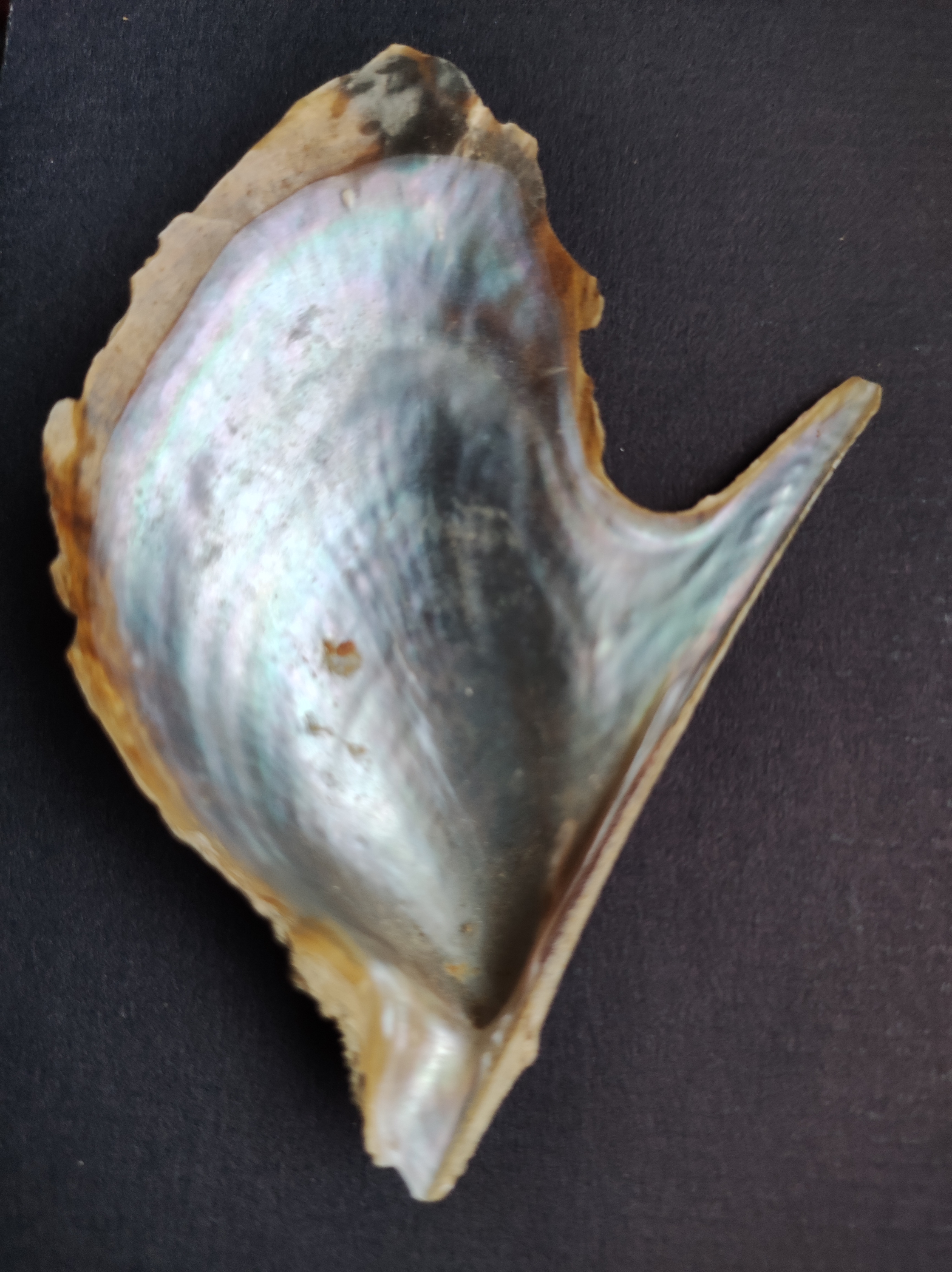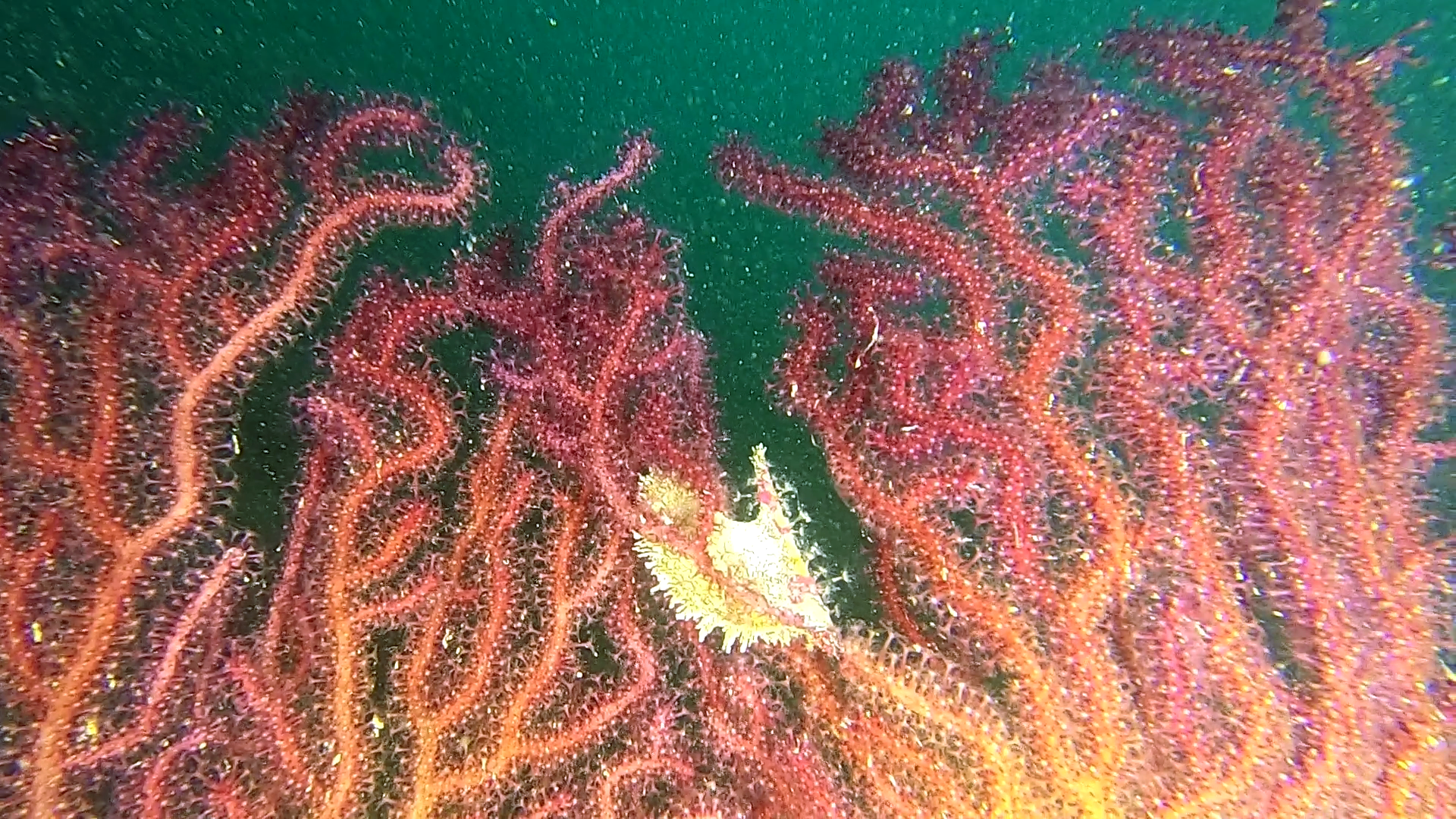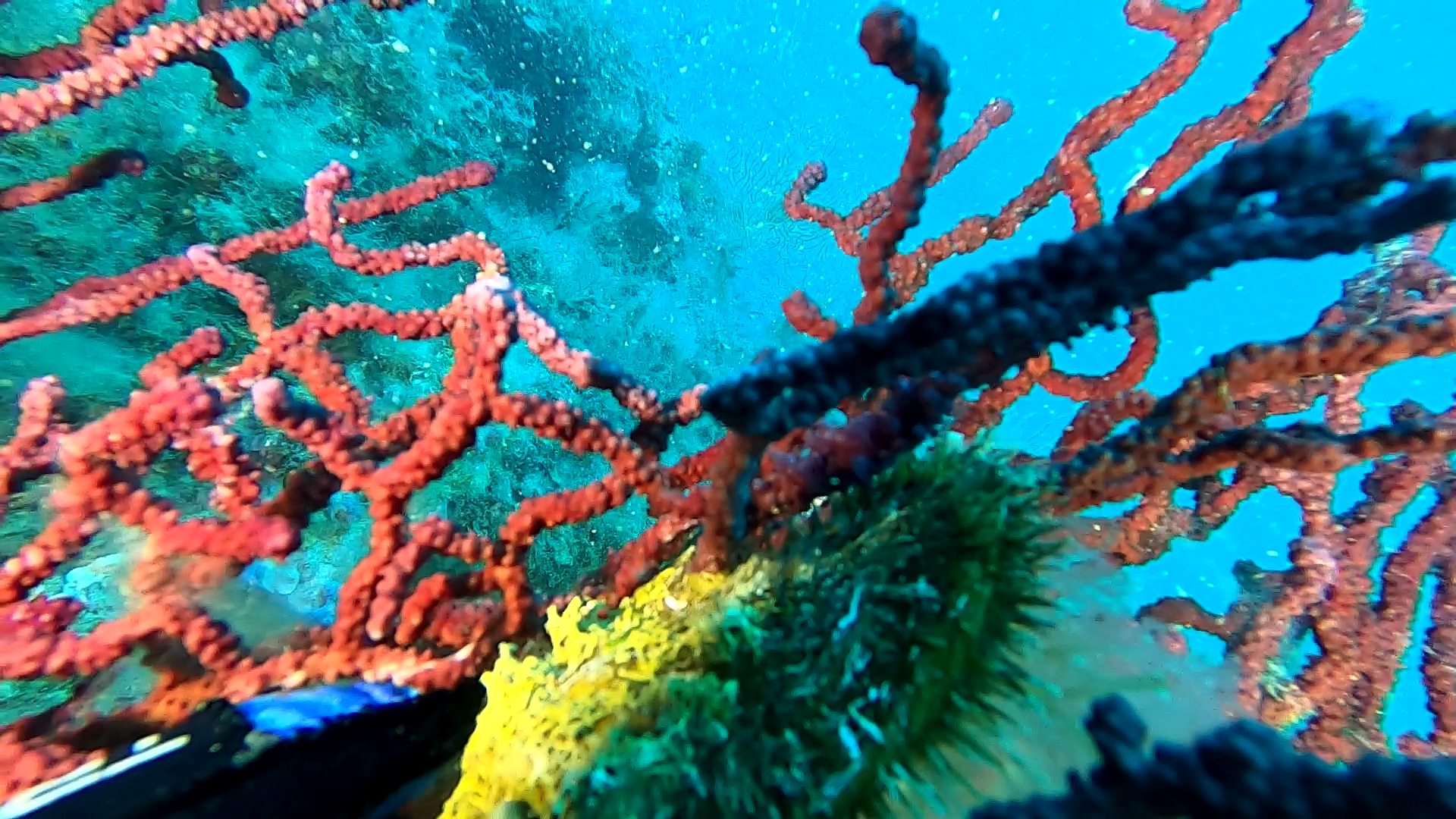Ostrica alata - Pteria hirundo
Pteria hirundo is a species of bivalve belonging to the family Pteriidae. The species is found in Europe, Africa and the Americas. The two valves are unequal and the lower one, to which the animal is anchored, is larger and hollow than the upper one. The mollusk has a rounded body, with the margins of the two edges of the mantle fringed. The winged oyster is found in the eastern Atlantic from southern England to Angola, in the western Atlantic from Massachusetts to the coast of Brazil.
They are also found in the waters around the Azores and the Canary Islands. It lives at a depth ranging from 15 to 300. They are attached to the rocky bottom with the byssus, which produces very long filaments, but also to corals, algae and fan-shaped gorgonians. In the Mediterranean Sea they particularly prefer the Gorgonians such as the Paramuricea clavata because they exploit the sea currents allowing them a better feeding.

The shell varies from yellowish gray to light gray, it is solid but fragile, the edge is scaly. Often the shells also show dark brown radial bands or even wrinkles. The surface of the shell is covered with concentric wrinkles and scales. The periostracum is brown to reddish brown, often flakes off, and may be elongated into hairs on the outer edge of the shell. The inner side is smooth and pearly in color. The shell of a bivalve is composed of calcium carbonate, and consists of two, usually similar, parts called valves.
These are joined together along one edge (the hinge line) by a flexible ligament that, usually in conjunction with interlocking “teeth” on each of the valves, forms the hinge. This arrangement allows the shell to be opened and closed without the two halves detaching. The shell is typically bilaterally symmetrical, with the hinge lying in the sagittal plane. Adult shell sizes of bivalves vary from fractions of a millimetre to over a metre in length, but the majority of species do not exceed 10 cm..

Near the hinge of the shell is the umbo, often a rounded, knob-like protuberance usually surrounding the beak. The umbo and the beak represent the oldest portion of the shell, with extra material gradually being laid down along the margins on the opposite sides. The hinge point or line is the dorsal region of the shell, and the lower, curved margin is the ventral region. The anterior or front of the shell is where the byssus (when present) and foot are located, and the posterior of the shell is where the siphons are located.

In all molluscs, the mantle forms a thin membrane that covers the animal’s body and extends out from it in flaps or lobes. In bivalves, the mantle lobes secrete the valves, and the mantle crest secretes the whole hinge mechanism consisting of ligament, byssus threads (where present), and teeth.
(tratto da Wikipedia)
https://www.intotheblue.it/2022/01/04/ostrica-alata-pteria-hirundo/
